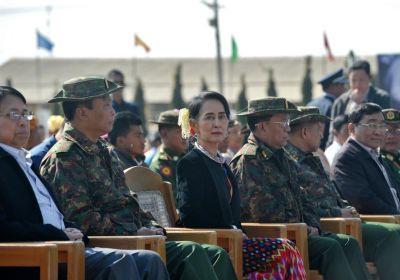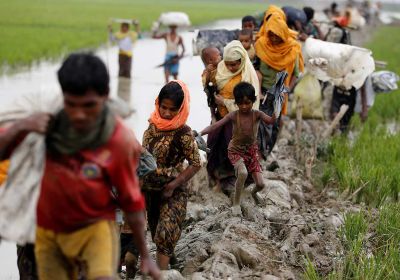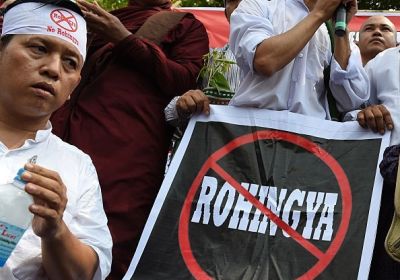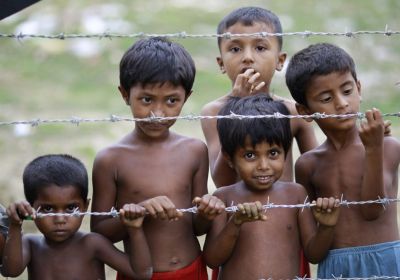Two new documentaries that screened at the recent Sydney Film Festival shine a light, in contrasting but powerful styles, on an important, yet often neglected story in the refugee narrative — why people seek asylum.
-
-

The United Nations said that nearly 4000 people have been driven out of their homes in Myanmar (also known as Burma) in April as the country’s north is gripped with violence.
-

United Nations human rights official Andrew Gilmour said on March 7 that it was impossible to safely send Rohingya refugees in Bangladesh back to their homes in Myanmar as documents released under freedom of information laws show that the Australian defence department plans to spend almost $400,000 on training members of the Myanma military in 2017-18.
-

More than 600,000 Rohingya have fled Myanmar (also known as Burma) to Bangladesh since August 25. With about 300,000 Rohingya refugees already in Bangladesh, tens of thousands in hiding in northern parts of Rakhine State and about 100,000 detained in Internal Displacement Camps, the United Nations Secretary General Antonio Guterres has described this mass exodus as “the world fastest-developing refugee emergency and a humanitarian and human rights nightmare.”
-
-
-

Rohingya are an ethnic Muslim group who have lived for centuries in the majority Buddhist Myanmar.
Many Rohingya came to Myanmar from what is now Bangladesh during the British colonial period (1820s to 1940s) to expand rice cultivation in Rakhine State.
About 1 million Rohingya live in Myanmar, mostly in Rakhine State, making up some 2% of the country’s population and about 30% of the state’s population.
-

During the early hours of August 25, some 20 to 30 police posts were attacked in Maungdaw, Buthidaung and Rathedaung townships in the north of Rakhine State in Myanmar (also known as Burma). Twelve police were killed along with 16 attackers.
Responsibility for these attacks was later claimed by the Arakan Rohingya Salvation Army (ARSA).
In the two weeks since, the Myanmar military’s response has been brutal, widespread and indiscriminate. While accurate figures are not available, between 400 (military’s estimate), and “around a thousand” (United Nations estimate) Rohingya have been killed by the army.
-

The ongoing genocide of Rohingya people in western Myanmar (also known as Burma) remains almost ignored by world media. Displaced from their homes, attacked by the military, interned in refugee camps and driven across the border into neighbouring Bangladesh, the Rohingya have become known as one of the world's most persecuted people.
Last year, photographer Ali MC visited Rohingya refugee and internally displaced peoples’ camps in Myanmar and Bangladesh. His aim was to photograph Rohingya people, document their living conditions and better understand the events that forced them into this situation
-
-
-
 The entire population of Burma supported Aung San Suu Kyi when she fought to get rid of the military dictatorship of Burma (Myanmar) during the 1990s. She received tremendous support from all communities, including non-Buddhist ethnicities and Muslim communities. No one considered what her policy on other religions and ethnic areas was. People just wanted to get rid of the regime.
The entire population of Burma supported Aung San Suu Kyi when she fought to get rid of the military dictatorship of Burma (Myanmar) during the 1990s. She received tremendous support from all communities, including non-Buddhist ethnicities and Muslim communities. No one considered what her policy on other religions and ethnic areas was. People just wanted to get rid of the regime.



